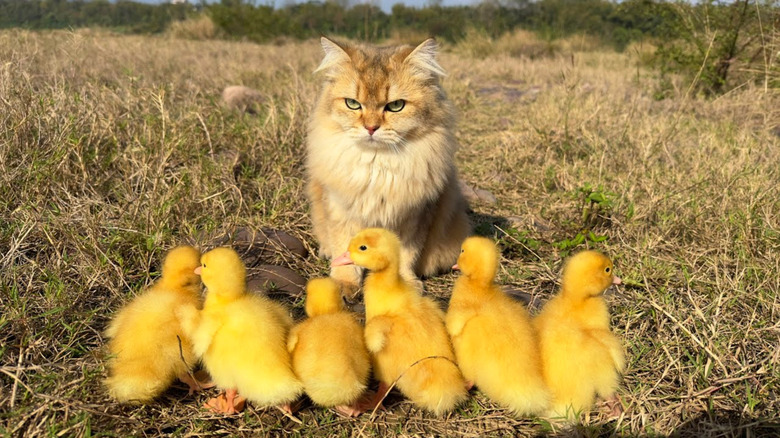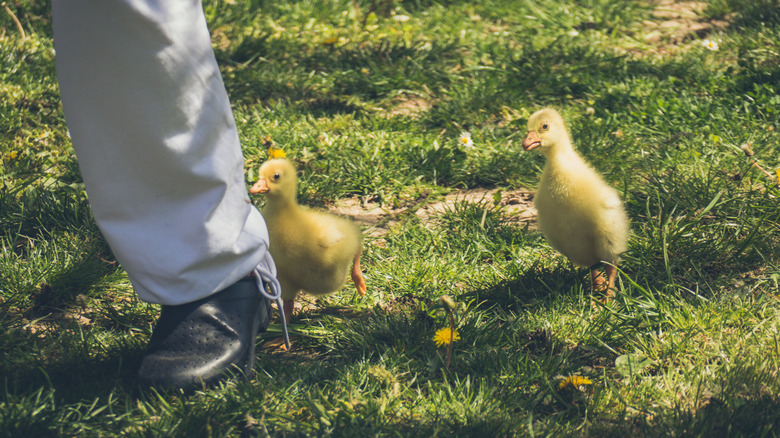The Reason Baby Ducks Follow Mother Cats (And Other Animals) Is So Heartwarming
If there's one type of internet content guaranteed to make every animal lover smile, it has to be a video showing a flock of fuzzy ducklings waddling contentedly behind a confident cat through the grass, a lively puppy running along outside, or a human strolling through a house. Though such videos may seem like nothing more than enjoyable but forgettable fluff — avian games of follow the leader — the baby ducks' adorable antics are actually the result of a natural behavior known as imprinting, which is part of normal baby duck development.
Ducks and many other types of birds imprint in the first few hours or days after cracking their way out of an eggshell, a period of time known to scientists as the sensitive period or critical period. Similar to geese, chickens, turkeys, penguins, and eagles, newly hatched ducklings imprint on the first large moving object they see, viewing this object as their parent and protector. When a duckling sees a cat, dog, or person immediately after hatching, the duck attaches itself to this perceived parent and diligently follows the parent around, mimicking behavior and snuggling (quite adorably) whenever possible. It's hard to imagine a more heartwarming display of duck affection.
Is it good for a duckling to imprint on anything other than a duck?
Adorable videos aside, problems arise when a duckling imprints on a non-duck. Each baby duck depends on its parent to teach it the skills it needs to grow to adulthood, including vocalizations, body language, social behaviors, where to find food, and how to stay safe around other animals and humans. A duckling that imprints on a cat, dog, or person will incorrectly identify with that species for the rest of its life, and it might never learn information crucial for a duck's survival. As an adult, it may act territorially or aggressively toward humans, viewing people as competitors for resources, but also act strangely toward other ducks, unsure of natural duck behavior.
Konrad Lorenz, the Austrian zoologist and ornithologist known as the "father of ethology," did groundbreaking work on imprinting in the 1930s. He experimented with having newly hatched greylag geese imprint on him, and the geese became as attached to him as if he were their mother. People involved in avian rescue and rehabilitation now go to great lengths to avoid having ducks, geese, and other birds imprint on humans. They employ tactics such as playing recordings of natural bird sounds, not talking to the birds, wearing disguises when handling the birds, and using puppets at feeding time. After all, if it looks like a duck and quacks like a duck, then it should be encouraged to behave like a duck, too.

